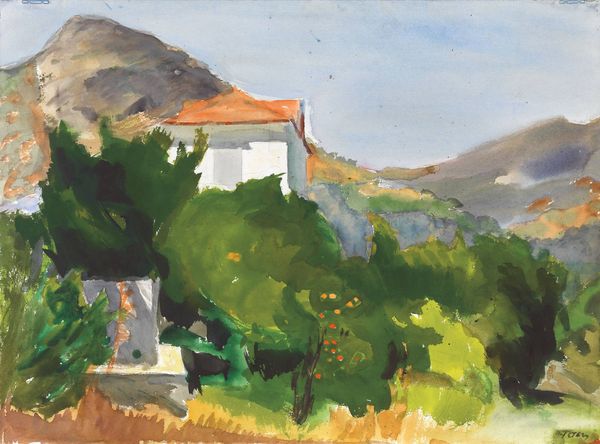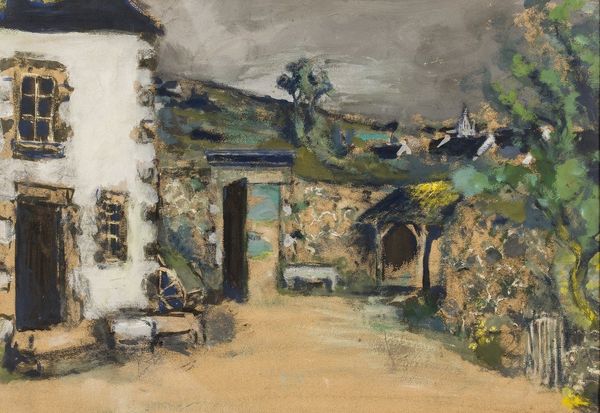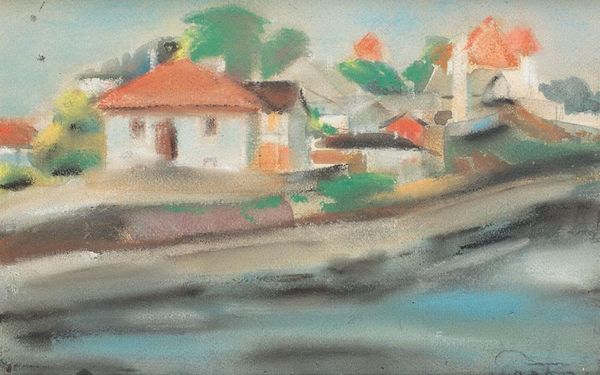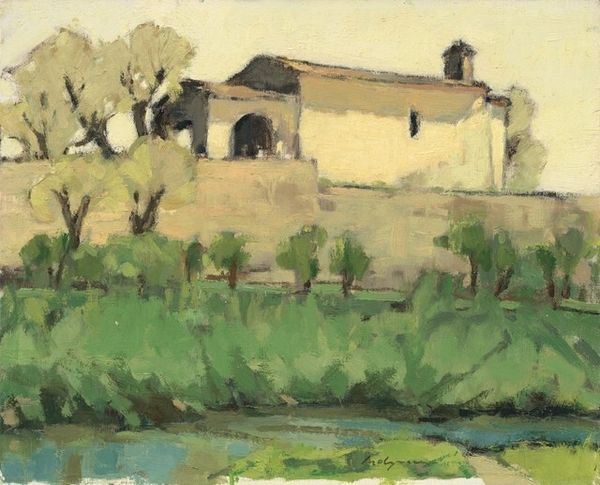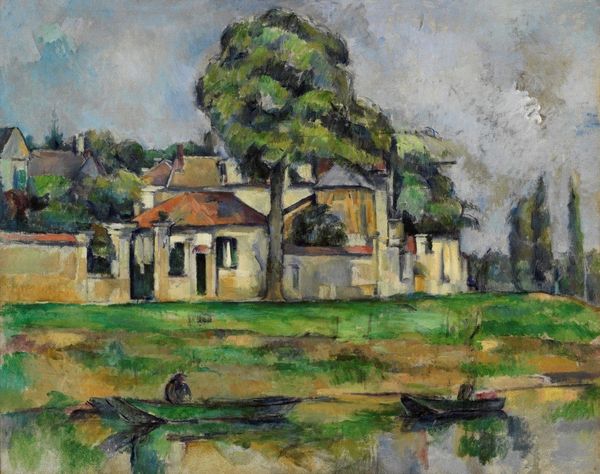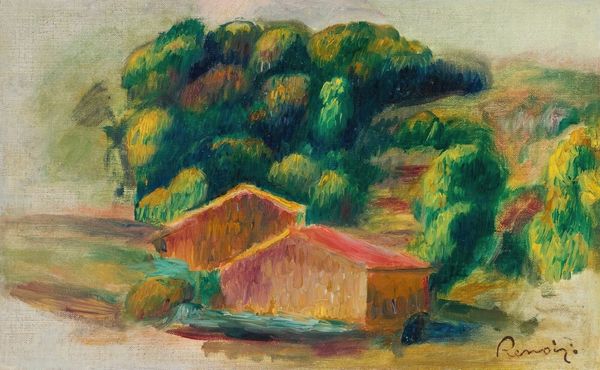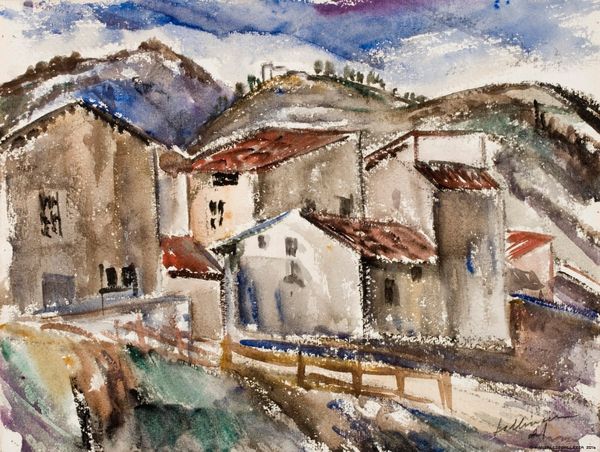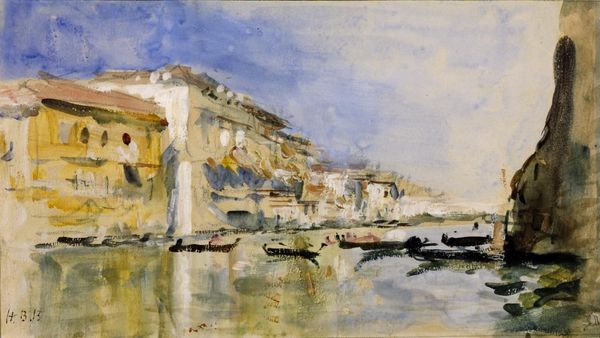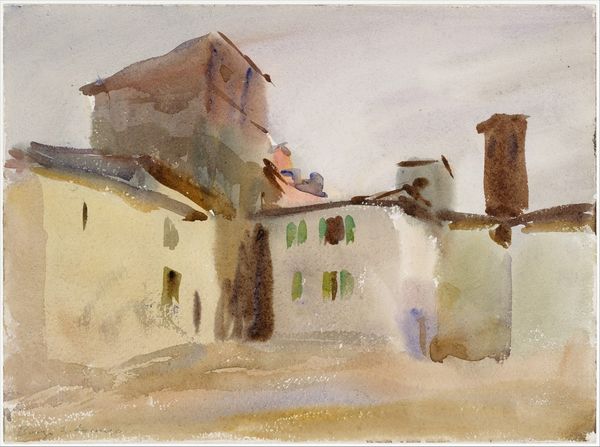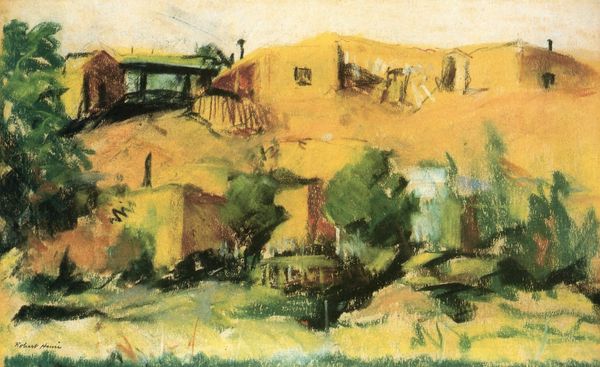
plein-air, watercolor
#
impressionism
#
plein-air
#
landscape
#
impressionist landscape
#
oil painting
#
watercolor
Dimensions: 23 x 35.5 cm
Copyright: Public domain
Curator: We're looking at Paul Cézanne's "Near Aix En Provence," likely executed around 1867. It's currently held in a private collection. The medium appears to be watercolor. Editor: My first impression is of gentle warmth—a kind of hazy tranquility. The colors are muted, and the application, while suggestive, feels unresolved. Curator: The suggestive quality is crucial, isn't it? Cézanne employs loose, transparent washes, prioritizing the interplay of light and form over meticulous detail. Notice how the horizontal strokes, especially in the foreground, create a sense of shallow depth. Editor: Right, and the buildings feel symbolic. Are they representative of something rooted and stable in his experience? Their muted presence provides a certain anchor amidst the flux of color. There's a sense of yearning. Curator: Perhaps. Structurally, observe how Cézanne blocks out space. The arrangement isn’t quite classically balanced; rather, there's a deliberate tilting towards the left. This gives the eye an almost restless quality, mirroring the plein-air conditions he embraced. It is as if we see this particular space on the move. Editor: Interesting. Do you find the location informs an idealized view? One might imagine, based on the work’s tranquility, the space is absent of human life. And yet there is a symbol for the figure. Curator: Cézanne deconstructs the traditional landscape, eschewing the idealized or romantic portrayal. His landscapes carry symbolic weight, I suspect you might agree, though I feel his process of formal reduction paved the way for modernism. Editor: Certainly. However, this speaks to cultural shifts regarding domestic space at that time, and even notions about family. There is a sense of loss associated with its symbolism, like the last moments of a golden afternoon. Curator: An interesting, though unexpected observation! I still think that for Cezanne, the overarching concern remains rooted in structural considerations rather than overt symbolism. Editor: Indeed! Either way, this has me wondering about Aix’s presence in cultural memory at that time and also now.
Comments
No comments
Be the first to comment and join the conversation on the ultimate creative platform.

